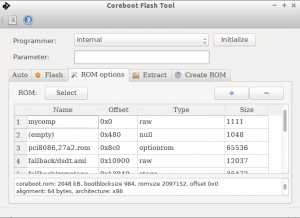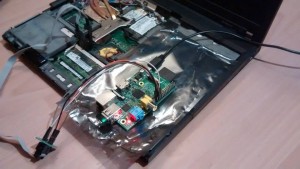Hello!
During week 13 I worked on:
- writing project documentation
- bug fixing
- code cleanup
- changing debug messages to information popups
DOCUMENTATION
All functions and variables are now documented in javadoc style, I also attached some comments in code, documentation can be generated with doxygen. Besides documenting code I prepared documentation for functional tests which I executed. It contains described test cases and test results.
NEW WORKING CONFIGURATIONS
To make automatic building of coreboot image feature more useful it is necessary to add more data about working configurations. Every added configuration also needs to be tested to check if tool correctly recognizes hardware on target system and builds working coreboot image. I can do this for my hardware, so of course I did, I can also add some fake configurations for testing purposes, but I can’t do this for hardware which I do not have.
Here is description of application, building process and information about data I need to add a working configuration: link. I will be grateful for every configuration which you will send!
GUI IMPROVEMENTS
Tool is targeted mostly for users which are not familiar with coreboot and flashrom details and also dont know how to proceed with building a working coreboot image. Taking it into consideration I changed most debug/error messages to appear in a form of a popup with description what action is needed from application user to proceed or what went wrong.
SUMMARY
End user flash tool is my first experience with coreboot and flashrom. Both of them are not easy projects, especially for someone who does not have great experience with firmware programming, because most code involves serious low level implementations, but in End user flash tool project I have been working always few layers above it because my work involved GUI programming, system programming, integration of external tools like bios_extract or cbfs_tool and adding few features to libflashrom. By doing it I learned a bit how these tools work internally. I am now also more familiar with coreboot itself. This work gave me good basics and smooth entry to the coreboot world. As all of this is interesting and working for such project is very satisfying I want to dive in more and also maintain and extend the tool.






